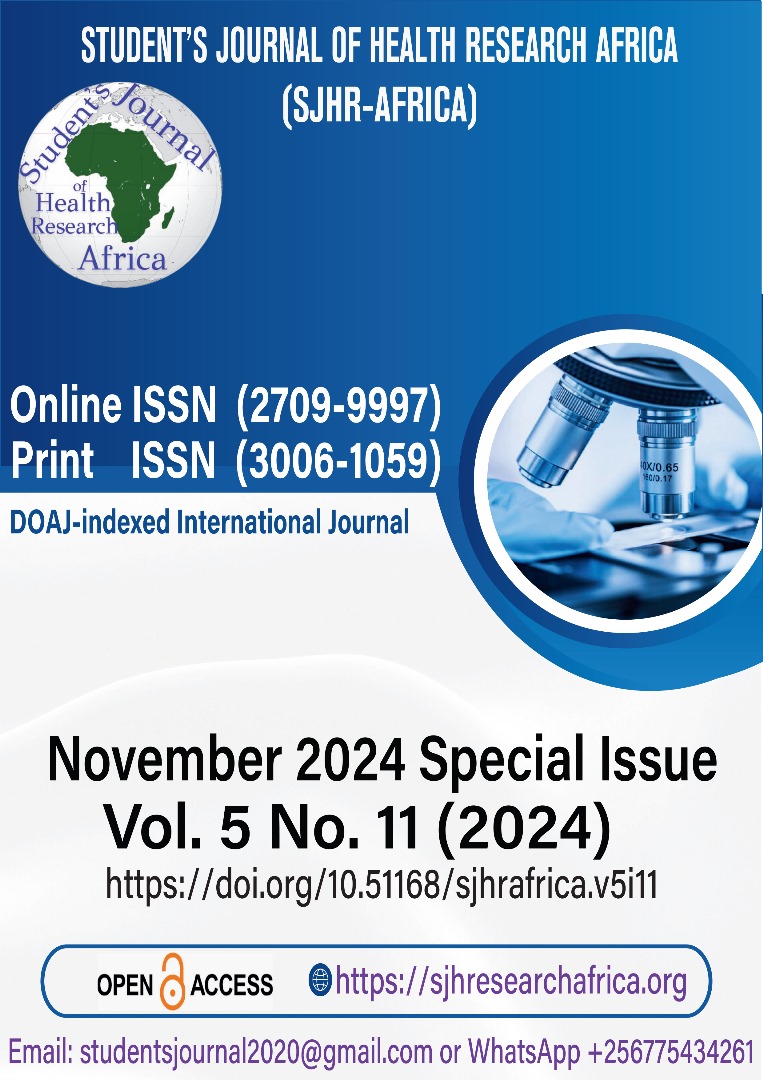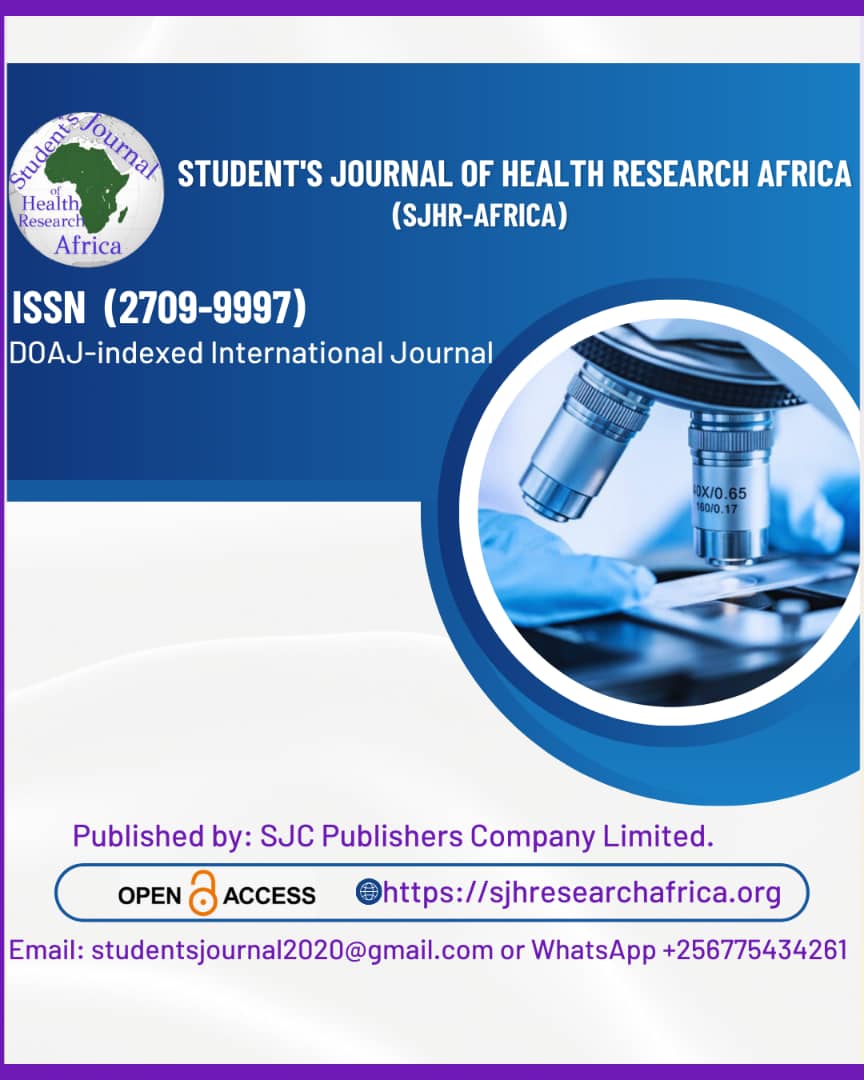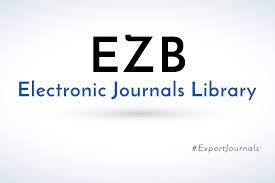COMPARISON OF THE OUTCOMES OF PHACOEMULSIFICATION AND MANUAL SMALL-INCISION CATARACT SURGERY IN POSTERIOR POLAR CATARACT – A RETROSPECTIVE STUDY
DOI:
https://doi.org/10.51168/sjhrafrica.v5i11.1746Keywords:
Posterior polar cataract, phacoemulsification, MSICS, posterior capsular rupture, vitreous loss, visual outcomes.Abstract
Background
Surgical challenges arise from posterior polar cataracts (PPC) due to their unique characteristics and fragility of the posterior capsule. These cases increase the risk of posterior capsular rupture (PCR), requiring careful surgical planning and technique selection. Phacoemulsification and MSICS are used, but their efficacy and safety in posterior polar cataracts (PPC) are still being studied.
Objective: Compare intraoperative complications, visual outcomes, and postoperative recovery of phacoemulsification and MSICS in posterior polar cataract patients.
Methods
This 22-month retrospective analysis was done at Jawahar Lal Nehru Medical College and Hospital, Bhagalpur. The surgical approach divided 72 PPC patients into two groups: Group A (n=36) received phacoemulsification, while Group B received MSICS. Patient records were reviewed for demographics, intraoperative events (PCR and vitreous loss), BCVA, and postoperative sequelae.
Results
The study found that posterior capsular rupture was more common in the MSICS group (19.4%) compared to the phacoemulsification group (11.1%), but the difference was not significant (p>0.05). MSICS had 8.3% vitreous loss compared to 2.8% in phacoemulsification. Group A had 80.5% BCVA ≥6/12 at one month, while Group B had 77.7%. MSICS patients had slightly higher postoperative inflammation, but it subsided by the first follow-up. No dropped nucleus or endophthalmitis was reported.
Conclusion
Careful phacoemulsification and MSICS can yield positive visual outcomes in posterior polar cataract surgery. Despite its technological complexity, phacoemulsification may reduce posterior capsular issues. MSICS remains viable, especially in resource-constrained environments. For fewer complications and better results, surgery experience, technique adjustments, and postoperative awareness are essential.
References
Arvind, H., Raju, P., & Paul, P. G. (2012). Surgical outcomes in posterior polar cataracts: A comparative study of phacoemulsification and MSICS. Indian Journal of Ophthalmology, 60(3), 271-274. https://doi.org/10.4103/0301-4738.96423
Gimbel, H. V., & DeBroff, B. M. (2004). Posterior polar cataracts: A review of surgical techniques. Journal of Cataract & Refractive Surgery, 30(3), 556-565. https://doi.org/10.1016/j.jcrs.2003.08.016 PMid:15093665
Gogate, P., Kulkarni, S., Krishnaiah, S., & Deshpande, R. (2005). Safety and efficacy of phacoemulsification compared to manual small-incision cataract surgery in community eye care settings. Indian Journal of Ophthalmology, 53(2), 123-128.
Hayashi, K., Hayashi, H., Nakao, F., & Hayashi, F. (2003). Risk factors for posterior capsule rupture during phacoemulsification. Journal of Cataract & Refractive Surgery, 29(12), 2179-2183. https://doi.org/10.1016/S0886-3350(02)01692-9 PMid:12551666
Khokhar, S., Agarwal, E., & Mahabir, M. (2013). Manual small incision cataract surgery in posterior polar cataract: Modifications to reduce complications. Journal of Clinical Ophthalmology and Research, 1(3), 133-137. https://doi.org/10.4103/2320-3897.122246
Osher, R. H. (1999). Managing the posterior polar cataract. Journal of Cataract & Refractive Surgery, 25(6), 745-746. https://doi.org/10.1016/S0886-3350(99)00119-2
Rao, S. K., Lam, D. S. C., & Khatib, T. (2012). Surgical techniques for posterior polar cataracts. Asia-Pacific Journal of Ophthalmology, 1(1), 7-11.
Sharma, B., Vasavada, A. R., & Vasavada, V. (2016). Management of posterior polar cataract: Techniques and outcomes. Eye, 30(5), 733-741. https://doi.org/10.1038/eye.2016.39 PMid:26965016 PMCid: PMC4906452
Vasavada, A. R., Singh, R. (1999). Phacoemulsification in eyes with posterior polar cataract. Journal of Cataract & Refractive Surgery, 25(2), 238-245.https://doi.org/10.1016/S0886-3350(99)80133-3 PMid:9951671
Vasavada, A. R., Singh, R., & Vasavada, V. A. (2002). Phacoemulsification of posterior polar cataracts. Journal of Cataract & Refractive Surgery, 28(7), 1167-1173.
Vasavada, A. R., Singh, R., & Vasavada, S. A. (2011). Techniques for posterior polar cataract surgery. Current Opinion in Ophthalmology, 22(1), 37-49. https://doi.org/10.1097/ICU.0b013e3283411ee7
Downloads
Published
How to Cite
Issue
Section
License
Copyright (c) 2024 Govind Kumar Mandal, Jagdish Choudhary, Pummy Roy

This work is licensed under a Creative Commons Attribution-NonCommercial-NoDerivatives 4.0 International License.






















